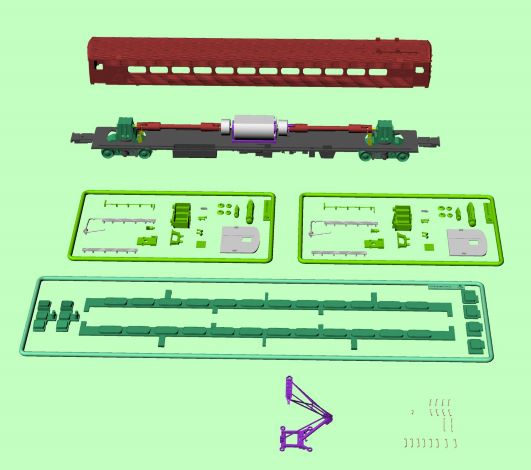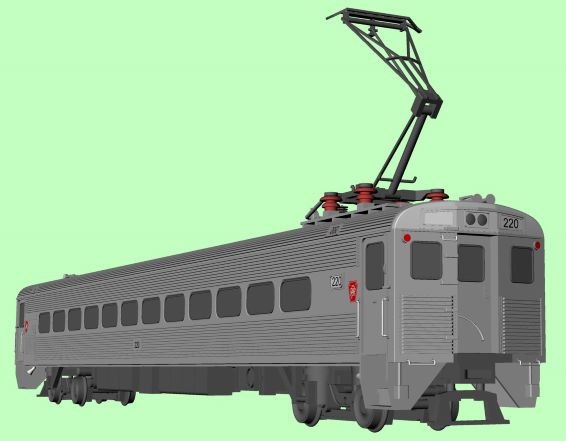| #8710 HO Scale Silverliner III |
| PRR Powered Kit |

The Silverliner III MU cars were built for the Pennsylvania Railroad in 1968. Twenty cars were completed to supplement the order of Budd-built Silverliners delivered to the PRR five years earlier. Their main distinguishing features are the large squarish picture windows and lack of letterboards. The St. Louis cars were built with two different seating arrangements: 3-2 and 2-2. They were also built with their control stands on the left side of the engineer's cabs, as opposed to the more traditional right side. The reason for this was that the cars were intended as experimental 'pay as you enter' commuter MU cars, but in the event, the arrangement was not employed, and the cars remained oddballs in this respect. They were also built with provision for center doors, as the PRR and its commuter operations in the Northeast were undergoing changes which might require them to be adapted to high-level loading in the future. This feature also has never been realized, though future generations of Silverliners have been built with center doors, or also with the provision for them.
The cars were assigned to Philadelphia electric service, and occasionally, Harrisburg service. When Amtrak decided to use the remaining Metroliner MUs on the Harrisburg line in 1981, the Silverliner IIIs stayed in Philadelphia. After the PRR merged with the NYC in 1969 to form the Penn Central Railroad, the cars acquired PC logos, at first along with the Keystone logos, and then exclusively PC logos. Later, they acquired SEPTA meatball logos in the 1970s and block logos in the 1980s. In the mid 1980s, SEPTA completed its Philadelphia International Airport Rail Line, and the cars with 2-2 seating were chosen to receive special paint schemes not applied to any other Silverliners. This scheme was a yellow windowband with black PHL airport logos. Though they were used on the Airport line as intended, they also found their way into the SEPTA systemwide pool.
By the late 1990s, the cars were starting to show their age, though they still soldiered on. They were given SEPTA's new Silverliner image in the early 2000s, consisting of a new windowband graphic. Throughout their lives, they retained their road numbers: 220-239. The cars were retired in 2012 and most have been scrapped.
IHP is planning to produce the Silverliner IIIs for the first time as an injection-moulded plastic kit. The detailed and easy-to-assemble kits will feature prepainted bodies and parts, and will include GSI General 70 inboard-bearing trucks and working metal Faively pantographs. We will start with two paint schemes, PRR and SEPTA (1980s) with several road numbers for each, and an undecorated version. Powered and unpowered kits will be available.
FEATURES:
*Easy-to-Build Prepainted Body Kits
*One-Piece Body Shell, Prepainted and Decorated
*One-Piece Frame with most underbody detail moulded on
*Roof Details
*Pre-Assembled Drive with Diecast frame, Can Motor and geared trucks, wired for 2-Rail DC
*Separate Wire Grabirons
*Kadee-compatible coupler pockets
*Kits Represent Cars as originally built and delivered to the PRR
KIT CONTENTS

